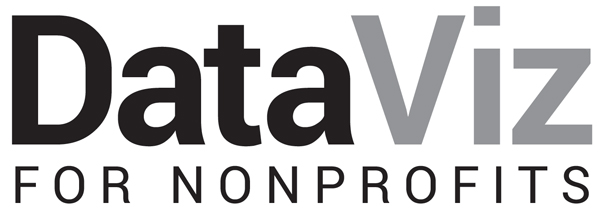It’s time to reconsider your plans for showing progress in 2020. The chart, map, or graph you planned to use on your website, in your annual report, or at the quarterly board meeting may no longer apply or may tell the wrong story. The lives of those you serve and the way you serve them probably have changed. The question is: how can you show progress and provide enough context so that viewers get it right and get it quickly. Below are some ideas. If your organization has come up with other solutions, please let me know, and I’ll share them in a future data tip.
1. Distinguish pre- and post-COVID periods
This is the simplest solution. Make sure to distinguish the COVID period in your charts using color, shading, borders, and captions. Viewers will expect to see differences between pre- and post-COVID periods. So show them where to apply these different expectations.
2. Emphasize COVID period
You might consider emphasizing the COVID period by enlarging it and showing an adjusted goal for this time. Even if your service capacity has decreased, you could be doing well compared to adjusted goals.
3. Discourage pre/post comparisons
In some cases, you may want to discourage pre- and post-COVID comparisons given how much circumstances have changed. You might show only the COVID period, perhaps along with an adjusted goal reference line.
4. Focus on adaptation over time
Although some programs and services may have come to a screeching halt, others may have ramped up speedily. There are plenty of ways to show these changes in charts that clearly distinguish both periods.
To see past data tips, including those about other chart types, click HERE.
Let’s talk about YOUR data!
Got the feeling that you and your colleagues would use your data more effectively if you could see it better? Data Viz for Nonprofits (DVN) can help you get the ball rolling with an interactive data dashboard and beautiful charts, maps, and graphs for your next presentation, report, proposal, or webpage. Through a short-term consultation, we can help you to clarify the questions you want to answer and goals you want to track. DVN then visualizes your data to address those questions and track those goals.













